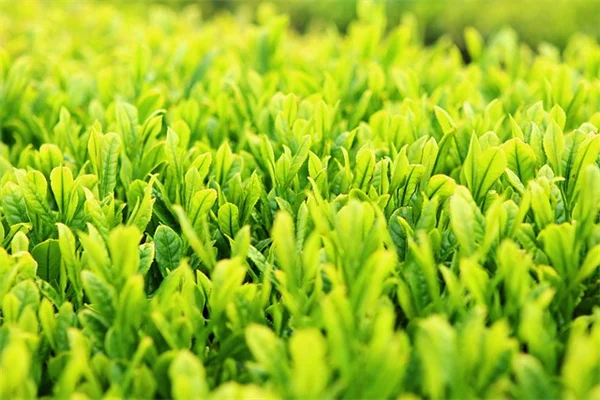How to Effectively Clean Calcium Chloride Brine from Your Concrete Floor: A Step-by-Step Guide
How to clean up calcium chloride brine on concrete floor? The answer is: cleaning up calcium chloride brine effectively is crucial to prevent long-term damage to your concrete surfaces! This slippery solution can leave behind unsightly stains and cause serious deterioration if left untreated. If you’ve noticed those pesky white stains forming on your driveway or garage floor, it’s time to act. In this article, I’ll guide you through the best practices and techniques to tackle this issue head-on. Together, we’ll explore the tools you need, the steps to follow, and even some preventative measures to keep your concrete looking its best. So, let’s roll up our sleeves and get started on reclaiming your concrete from the grips of calcium chloride brine! 💪
E.g. :How to Clean Your Garage Floor Without a Pressure Washer: 7 Simple Steps
- 1、What Exactly is Calcium Chloride Brine? 🤔
- 2、The Concrete Catastrophe: How Brine Wreaks Havoc 🚧
- 3、Arming Yourself for Battle: The Ultimate Cleaning Toolkit 🛠️
- 4、The Step-by-Step Brine Removal Battle Plan ⚔️
- 5、Prevention: Building Your Concrete's Defenses 🛡️
- 6、When to Call in the Professionals 🦸
- 7、Your Concrete's New Lease on Life 🌱
- 8、FAQs
What Exactly is Calcium Chloride Brine? 🤔
The Science Behind This Slippery Solution
Picture this: it's winter in Chicago, and trucks are spraying roads with a magical liquid that melts ice instantly. That's calcium chloride brine in action! This super-concentrated saltwater solution contains about 30% calcium chloride - enough to lower water's freezing point to -60°F (-51°C). No wonder it's the go-to choice for keeping roads ice-free!
But here's the catch - when this brine dries on your concrete driveway or garage floor, it leaves behind more than just water. The calcium chloride crystals penetrate deep into concrete pores, creating what we call "efflorescence" (those ugly white salt deposits). Over time, these crystals expand and contract with temperature changes, slowly breaking apart your concrete from within. Think of it like tiny jackhammers working 24/7 inside your floor!
Where You'll Commonly Encounter It
You've probably walked through calcium chloride brine without even realizing it! Here are the most common places you'll find this sneaky substance:
| Location | Why Used | Potential Damage |
|---|---|---|
| Driveways | Melt ice quickly | Surface scaling |
| Garages | Prevent tracking in snow | Pitting and spalling |
| Warehouse floors | Dust control | Discoloration |
| Parking lots | Prevent slip hazards | Structural weakening |
Did you know that just one winter season of calcium chloride exposure can reduce your concrete's lifespan by 5-10 years? That's why learning proper cleanup techniques is so crucial!
The Concrete Catastrophe: How Brine Wreaks Havoc 🚧
 Photos provided by pixabay
Photos provided by pixabay
The Immediate Effects You Can See
Within hours of calcium chloride brine drying on your concrete, you'll notice the first visible signs of trouble. Those chalky white stains aren't just ugly - they're the first warning that your concrete is under attack. The salt crystals form a crust that actually traps moisture beneath the surface, creating the perfect conditions for freeze-thaw damage.
Here's a fun experiment you can try: sprinkle some calcium chloride brine on a small concrete patch and watch what happens over a week. You'll see:
- Day 1: Shiny wet appearance
- Day 3: White powder forming
- Day 7: First visible pits and flakes
The Hidden Damage Beneath the Surface
While the surface stains are obvious, the real danger lurks where you can't see it. Calcium chloride brine penetrates deep into concrete's porous structure, where it:
- Reacts with calcium hydroxide in concrete
- Forms expansive compounds that crack the matrix
- Attracts moisture that freezes and expands
- Corrodes steel reinforcements in structural concrete
Ever wonder why some concrete seems to crumble for no reason? Now you know - it's often calcium chloride damage working from the inside out!
Arming Yourself for Battle: The Ultimate Cleaning Toolkit 🛠️
Safety First - Protecting Yourself
Before we dive into cleaning, let's talk safety. Calcium chloride brine isn't just tough on concrete - it can irritate your skin and eyes too. Here's what you'll need:
Essential Safety Gear:
- Rubber gloves (the kind that go up to your elbows)
- Safety goggles (no, regular glasses won't cut it)
- Knee pads (you'll be kneeling a lot)
- Respirator mask (for dry sweeping)
Remember that time I tried cleaning without gloves? My hands were red and itchy for days - learn from my mistake!
 Photos provided by pixabay
Photos provided by pixabay
The Immediate Effects You Can See
Now for the fun part - gathering your cleaning weapons! Here's what works best against calcium chloride brine:
Basic Tools:
- Stiff-bristle push broom
- Heavy-duty scrub brush
- Garden hose with spray nozzle
- Wet/dry vacuum
Advanced Options:
- Pressure washer (1500-3000 PSI)
- Floor scrubber (for large areas)
- Concrete cleaner (pH-neutral)
- Acid-based cleaner (for stubborn stains)
Pro tip: Invest in a good quality squeegee - it'll save you hours of mopping up water later!
The Step-by-Step Brine Removal Battle Plan ⚔️
Phase 1: Dry Removal Tactics
First rule of brine cleanup: never add water to dry salt! That just creates more brine and spreads the problem. Here's how to start:
1. Sweep up all visible salt crystals with a stiff broom
2. Use a dustpan to collect the residue
3. Vacuum any remaining powder with a wet/dry vac
4. Dispose of properly (don't just sweep it into the grass!)
Why is dry removal so important? Because every grain of calcium chloride you remove now is one less grain that can dissolve and penetrate your concrete later!
Phase 2: The Wet Cleaning Offensive
Now that the dry stuff is gone, it's time to tackle what's soaked in. Here's my proven method:
Step 1: Mix a cleaning solution (1 gallon warm water + 1 cup white vinegar + 1/4 cup dish soap)
Step 2: Apply generously and let sit for 5-10 minutes
Step 3: Scrub vigorously with a stiff brush
Step 4: Rinse thoroughly with clean water
Step 5: Dry immediately with squeegee or wet vac
For really stubborn stains, you might need to repeat the process 2-3 times. Patience pays off!
Prevention: Building Your Concrete's Defenses 🛡️
 Photos provided by pixabay
Photos provided by pixabay
The Immediate Effects You Can See
The best way to prevent future calcium chloride damage? A good quality concrete sealer! Here's a quick comparison of popular options:
| Sealer Type | Protection Level | Reapplication | Cost |
|---|---|---|---|
| Acrylic | Basic | Yearly | $ |
| Epoxy | Heavy-duty | 3-5 years | $$$ |
| Polyurethane | Professional | 5+ years | $$$$ |
I applied epoxy sealer to my garage floor last year, and brine just beads up now instead of soaking in - total game changer!
Alternative De-Icing Strategies
Sometimes the best defense is avoiding the problem altogether. Consider these calcium chloride alternatives:
For melting ice:
- Magnesium chloride (less damaging)
- Potassium acetate (airport-grade)
- Sand (for traction without melting)
For dust control:
- Polymer stabilizers
- Lignin sulfonate
- Vegetable oil-based products
Bonus tip: Shovel early and often - less ice means less need for de-icers!
When to Call in the Professionals 🦸
Recognizing When DIY Isn't Enough
How do you know when your concrete damage needs professional help? Here are the warning signs:
- Deep cracks wider than 1/4 inch
- Large areas of spalling (flaking surface)
- Exposed rebar or aggregate
- Structural movement or settling
If you're seeing any of these, it's time to call a concrete restoration specialist. Trust me, I learned this the hard way when my DIY repair lasted exactly one freeze cycle!
What the Pros Can Do That You Can't
Professional concrete contractors have tools and techniques we mere mortals can only dream of:
1. Diamond grinding - removes damaged surface layers
2. Polymer overlays - creates a new protective surface
3. High-pressure injection - fills and stabilizes cracks
4. Commercial-grade sealers - lasts years longer than store-bought
Sometimes spending a little now saves a lot later - concrete replacement costs 3-5x more than professional repair!
Your Concrete's New Lease on Life 🌱
Regular Maintenance Schedule
Now that you've rescued your concrete from calcium chloride damage, let's keep it that way! Here's my simple maintenance routine:
Monthly: Sweep and rinse with plain water
Quarterly: Deep clean with pH-neutral cleaner
Annually: Inspect and touch up sealer
Every 2-3 years: Reapply full sealer coat
Set calendar reminders - your future self will thank you when your concrete still looks great years from now!
Monitoring for Future Damage
Stay vigilant for these early warning signs of new calcium chloride damage:
- White powder reappearing in the same spots
- Small pits or holes developing
- Surface feeling rough or sandy
- Water no longer beads up on sealed areas
Catching these early means simpler fixes - it's like going to the dentist for regular checkups instead of waiting for a root canal!
Cleaning up calcium chloride brine on your concrete floor is no small task, but with the right approach, you can tackle it effectively. First, remember that dry removal is crucial. By sweeping and vacuuming the visible salt crystals, you’re preventing further damage to your concrete. Once you've done that, transitioning to a wet cleaning method with a homemade solution can help you lift any remaining stains. It's important to scrub vigorously and rinse thoroughly to ensure you’re not leaving any residue behind.
As we’ve seen, the damage caused by calcium chloride can be extensive, but with a proactive cleaning strategy, you can significantly reduce its impact. I’ve shared my experience with both cleanup methods, and I encourage you to follow the steps outlined to protect your concrete. Regular maintenance, including sealing and monitoring for damage, will also help extend the lifespan of your concrete surfaces. If you’re struggling with stubborn stains or extensive damage, don’t hesitate to reach out for professional help—they have the tools and expertise to make a lasting difference! Let’s keep our driveways and garages in top shape together! 🚧✨
In addition to cleaning, it's wise to explore preventive measures to safeguard your concrete from future calcium chloride exposure. Using sealants can create a barrier against moisture and salt penetration, while opting for alternative de-icing strategies can minimize the need for harsh chemicals. For instance, consider using magnesium chloride or sand for traction instead of calcium chloride. These options are less damaging and can help maintain the integrity of your concrete. Also, don't forget to regularly inspect your concrete for signs of damage, so you can address any issues early on. Staying proactive not only protects your investment but also saves you time and money in the long run. I’d love to hear about your experiences with cleaning and maintaining your concrete, so feel free to share your thoughts in the comments below! 🛠️🌟
E.g. :Will spilled liquid calcium chloride go away? : r/chemistry
FAQs
What are the main benefits of using calcium chloride brine for ice control?
Calcium chloride brine is a fantastic choice for ice control because it melts ice quickly, even in extremely low temperatures. This solution can lower the freezing point of water to an impressive -60°F (-51°C), making it highly effective for keeping roads and walkways safe during winter. Additionally, it helps prevent slip hazards, allowing for safer travel on driveways, parking lots, and sidewalks. However, while it’s effective, I always recommend being aware of its potential long-term damage to concrete surfaces, which can lead to costly repairs down the line.
How can I safely remove calcium chloride brine from my concrete surfaces?
To safely remove calcium chloride brine from your concrete, I suggest starting with dry removal tactics. First, sweep up any visible salt crystals using a stiff broom and collect them with a dustpan. Next, vacuum up the remaining powder with a wet/dry vacuum. After that, you can tackle the wet cleaning phase by mixing a solution of warm water, white vinegar, and dish soap. Apply this mixture to the affected areas, scrub vigorously, and rinse thoroughly. It's crucial to dry the area afterward to prevent any moisture-related issues!
Can calcium chloride brine damage my concrete, and how can I prevent it?
Absolutely, calcium chloride brine can damage your concrete over time. It penetrates the concrete’s pores, causing efflorescence and weakening the structure due to freeze-thaw cycles. To prevent this damage, I highly recommend applying a good quality concrete sealer. This protective layer acts as a barrier, preventing brine from soaking into the concrete. Additionally, consider alternative de-icing methods like magnesium chloride or sand to reduce the use of calcium chloride altogether, which can help maintain your concrete’s integrity.
What signs indicate that my concrete has been damaged by calcium chloride?
Look out for several key signs that your concrete may be suffering from calcium chloride damage. You might notice chalky white stains on the surface, which are initial indications of salt deposits. Additionally, if you see small pits or flakes forming, that's a sign that the brine is causing damage beneath the surface. Over time, deep cracks or large areas of flaking can develop, signaling more severe structural issues. Regular inspection can help you catch these problems early and address them before they worsen!
When should I consider hiring professionals for concrete repair?
If you notice deep cracks wider than 1/4 inch, significant areas of spalling, or exposed rebar, it's time to call in the professionals. These issues indicate that the damage is beyond what a DIY fix can handle. Professionals have specialized tools and techniques, such as diamond grinding and high-pressure injections, that can effectively restore your concrete. Investing in expert help can save you money in the long run, as neglecting severe damage often leads to more extensive—and expensive—repairs.


